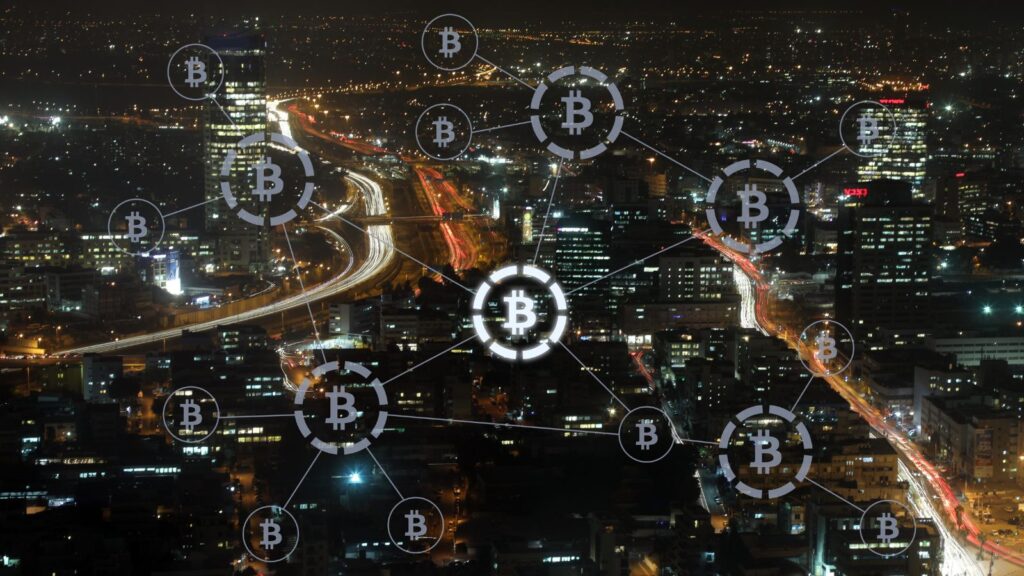Revolutionizing Transparency and Efficiency
Humanitarian crises often occur in the developing world. There, infrastructure is minimal or non-existent. This includes financial systems. Whether it’s a war-torn region or a place hit by natural disasters like earthquakes or tsunamis, delivering aid is challenging. Managing aid in these areas is difficult, both in terms of speed and transparency.
In these situations, blockchain and cryptocurrencies have become revolutionary tools. They allow aid to be distributed more efficiently, securely, and transparently.
This emerging technology is transforming the humanitarian aid supply chain. Blockchain addresses long-standing issues such as transparency, accountability, and efficiency. It helps charities bypass failing or non-existent banking systems in crisis zones. This paper examines how blockchain is disrupting the humanitarian aid sector. It also treats how cryptocurrency is becoming a vital currency in areas where traditional banking is unavailable. Find here News on Crypto and Blockchain Landscape.
Monitoring in Real Time
Thus, one of the greatest values of applying blockchain technology in humanitarian aid is the chance to increase transparency. Blockchain is a decentralized electronic database which distributes transaction records in many computers. Indeed, each interaction is documented down to each payment made, and all the evidence is available to all of the parties in the course of the trials. This is especially important in the aid sector which has for instance faced challenges such as corruption of the funds.
Benefits in Practice
- Aid organizations often struggle to track funds from donors to recipients. Traditional systems involve intermediaries like banks and local governments, which can lead to corruption or mismanagement. With blockchain, every step of the process can be monitored. Donors can see where their money goes, and organizations can ensure aid reaches the right people.

- Blockchain also cuts out the need for many intermediaries. Normally, aid distribution involves multiple layers, which slows things down and adds costs. Blockchain allows direct transactions between parties, speeding up the process and reducing expenses. This means more money can go to helping people, rather than covering administrative costs.
A real-world example is the World Food Programme’s Building Blocks project. It uses blockchain to give refugees cash-for-food assistance. Refugees can buy food from local stores without needing traditional banking services. Blockchain helps the WFP cut transaction fees, improve transparency, and get aid to people faster.
Aid for Crisis Zones
In crisis zones, traditional banking often fails or is unavailable. Cryptocurrencies offer a crucial alternative. Coins like Bitcoin, Ethereum, and stablecoins let people transfer funds directly without banks. This is helpful in areas affected by war, political chaos, or natural disasters where banking systems are unreliable.
No Banks
Many people in crisis zones can’t access financial services. This makes receiving aid difficult. Cryptocurrencies, however, can be sent and received on smartphones, which are common even in remote areas. This allows aid groups to quickly send money directly to those in need, avoiding broken banking systems.
A clear example is Venezuela. Hyperinflation has made the national currency nearly worthless. Many Venezuelans now use cryptocurrencies to buy goods, receive remittances, and survive. Humanitarian groups also use crypto to send aid, bypassing the failing financial system.
Cryptocurrencies are also helping in other crisis zones. In Ukraine, during the ongoing conflict, the government and aid organizations have used cryptocurrencies to raise funds. This has let them receive donations quickly from around the world to provide food, medical supplies, and other essentials. The borderless nature of crypto allows aid to flow without the delays that traditional banking often brings.
Speed and Efficiency in Aid Distribution
Time is always an essential factor in humanitarian aid. Conventional banking systems take too long in disaster situations. Electronic funds transfer can take days or even weeks. It is a fact especially when involving cross-border transfers. Important aid is thus slowed down. But that can be done with Cryptocurrencies with almost no time being taken in the process. This means that money can be transferred from one place to the other within a few minutes or hours not days.

This is very important in regions where the disaster has occurred since each minute is very crucial. When the 2015 Nepal earthquake happened resources had to be delayed because there were slow transfers of money in banks. Had cryptocurrencies been more well-known, the funds could have gotten through earlier, more lives could have been saved, as well as more help be delivered.
Also, the use of cryptocurrencies entails lower costs for transactions. This means further improvement in the percentage of the amount of money that we can use in directly helping people and less on the percentage that is used in paying back the banks and other administrative costs. International transfers can be costly, for example, to a country that may have a relatively inefficient banking sector. The use of cryptocurrencies is cheaper than that of normal means since the charges are more affordable as compared to those of banks and money transfer companies.
Humanitarian Aid for Next Generations
The utilization of blockchain and cryptocurrencies may be the biggest game changer in humanitarian aid. This means that as more organizations continue to discover the benefits of blockchain technology in record-keeping, we are likely to observe more blockchain-based systems for the distribution of aid. Blockchain can increase the level of effectiveness through transparency and accountability of the donated money. It can also shorten the time to deliver the aid to the affected people.
But challenges remain. Governments in the crisis zones should step up to ensure adequate enlightenment and provision of infrastructure for blockchain and cryptocurrencies. This raises the question of how practitioners should proceed. And how existing regulatory frameworks have to be adjusted to avoid misapplication of these promising technologies.
Therefore, one can witness that blockchain and cryptocurrencies are already disrupting the aid delivery process. They make the process less obscure and more streamlined and easier to access. These technologies will be even more relevant in scaling minor humanitarian crises, as these technologies grow over time.



